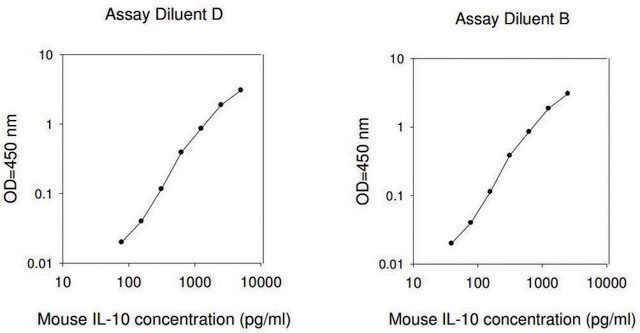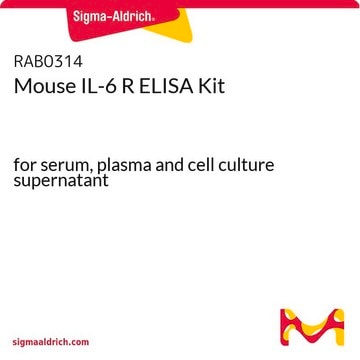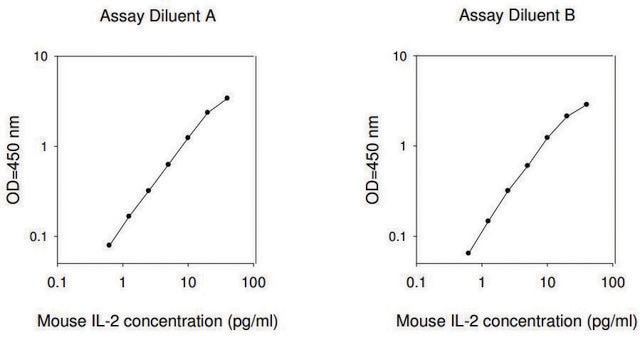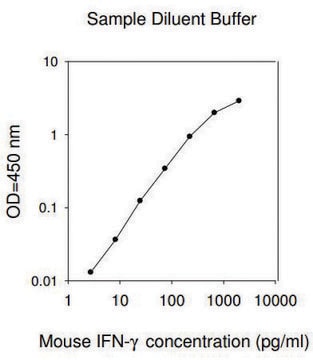The Assay/Sample Diluent Buffer (Item E2) should be diluted 5-fold. This 1X Assay/Sample Diluent Buffer is used to dilute serum, plasma, or medium samples a recommended 2 fold. Please note that the levels of IL-6 may vary between different samples. Optimal dilution factors for each sample must be determined by the investigator.
推薦產品
物種活性
mouse
包裝
kit of 96 wells (12 strips x 8 wells)
技術
ELISA: suitable
capture ELISA: suitable
輸入
sample type plasma
sample type cell culture supernatant(s)
sample type serum
assay range
inter-assay cv: <12%
intra-assay cv: <10%
sensitivity: 2 pg/mL
standard curve range: 0.82-600 pg/mL
檢測方法
colorimetric
運輸包裝
wet ice
儲存溫度
−20°C
基因資訊
mouse ... Il6(24498)
一般說明
免疫原
生化/生理作用
其他說明
请在批号文本框中输入汉字 样本 。
訊號詞
Warning
危險聲明
防範說明
危險分類
Met. Corr. 1
儲存類別代碼
8A - Combustible corrosive hazardous materials
客戶也查看了
-
Hello. How much should I dilute tissue culture media for the assay? 2-fold? Thanks.
1 answer-
Helpful?
-
-
マウスのパイエル板をホモジナイズした上清で測定は可能ですか?
1 answer-
This product is suitable with serum, plasma, and cell culture supernatant. However, it has not been determined if this product can measure the supernatant obtained by homogenizing mouse Peyer's patches. This application will need to be validated by the end-user.
While the requested ELISA kit nor any of the offered normal ELISA kits are neither designed nor validated with cell/tissue lysate samples, our kits are very accommodating to many different sample types so lysates will most likely work. If it is decided to test these kits with cell/tissue lysate samples, it is recommended to dilute the samples at least 5-fold with Assay Diluent to minimize any effects of the detergents in the lysis buffer. The samples may need to be diluted further but this would need to be determined by the experimenter empirically.
So for the original lysate, in general it is recommended to shoot for at least 1 mg/ml protein, preferably more, to achieve 50-500 ug/ml after dilution. Again though, this range should just be used as a starting point and the optimal concentration would need to be determined empirically.
Below are some general guidelines for doing so along with some basic tips for sample preparation.
Tips on Sample preparation
In brief, a lysis buffer must meet the following specifications:
A) has relatively low salt content (700 mM or less)
B) does not contain sodium azide
C) does not contain >0.1% SDS
D) does not contain >10 mM reducing agents (beta-mercaptoethanol or dithiothreitol)
This would include any buffers used for immunoprecipitations, including RIPA buffer.Helpful?
-
Active Filters
我們的科學家團隊在所有研究領域都有豐富的經驗,包括生命科學、材料科學、化學合成、色譜、分析等.
聯絡技術服務

















